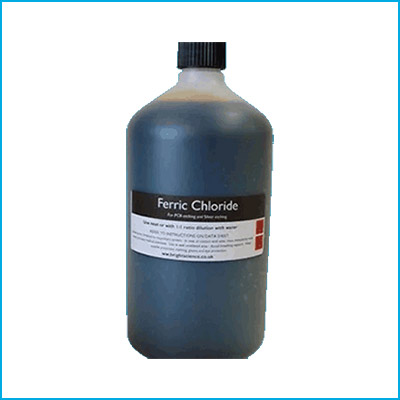- 022-28937494 / +91 9619133576
- bhavya@bhumichem.com
Ferric Chloride
Ferric Chloride
Bhumi Chem(India) is a leading Exporter of Ferric Chloride
Ferric Chloride Anhydrous
ferric chloride is prepared by direct chlorination of iron with chlorine and product is collected after condensation of sublimed products. The process controlled and adjusted precisely obtain highest purity.
Application:
In Photoengraving, Photography, Manufacture of other Fe salts, Pigments,Ink, as Catalyst in Organic Reactions, Purifying Factory Effluents and Chlorination of Ag and Cu ores, as Mordant in Dyeing & Printing Textiles, Oxidizing Agent in Dye Manufacture.
Ferric Chloride Liquid
Liquid Ferric Chloride Solution is a solution of Iron III Chloride (FeCl3) in water. Ferricchloride solution is manufactured by virgin raw material in an oxidation process using chlorine and Ferrous Chloride solution (Fecl3 solution).
Ferric Chloride Hexahydrate
The descriptor hydrated or anhydrous is used when referring to iron(III) chloride, to distinguish between the two common forms. The hexahydrate is usually given as the simplified empirical formula FeCl3.6H2O
ferric chloride Hexahydrate.
Ferric Chloride
Ferric Chloride, also know as Iron(III) chloride, and Iron chloride, is an industrial scale commodity chemical compound. Its chemical formula is FeCl3 and its CAS is 7705-08-0. When dissolved in water, the compound undergoes hydrolysis resulting in a brown highly corrosive, acidic solution that is used as a flocculent in sewage treatment and drinking water production. Anhydrous iron(III) chloride is a strong Lewis acid that is used as a catalyst in organic synthesis.
DESCRIPTION
In its raw form, ferric chloride is a hygroscopic crystal. Its color is dependent on the viewing angle. In reflected light, the crystals appear to be dark green. By transmitted light, they appear purple-red. Ferric chloride is readily soluble in liquids with donor properties, such as alcohols, ketones, ethers, nitriles, amines, and liquid sulfur dioxide, but sparingly soluble in nonpolar solvents like benzene and hexane according to Ulmann’s Encyclopedia of Industrial Chemistry.
Ferric chloride is harmful, highly corrosive, and acidic. The anhydrous material is a powerful dehydrating agent. Although poisoning in humans is rare, ingestion of ferric chloride can result in serious morbidity and mortality.
The most common use of ferric chloride is in solution. When dissolved it forms a light brown aqueous solution with a faint hydrochloric acid odor. It is highly corrosive to most metals and probably corrosive to tissue. It is noncombustible and primarily used in sewage treatment and water purification.
Industrial uses include the manufacture of pigments, plating agents and surface treating agents, process regulators, and solids separation agents.
Ferris chloride is produced industrially by a process called direct chlorination, the reaction of dry chlorine with scrap iron at 500-700 degrees Centigrade.

